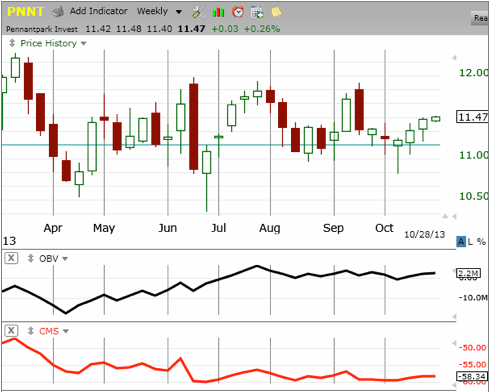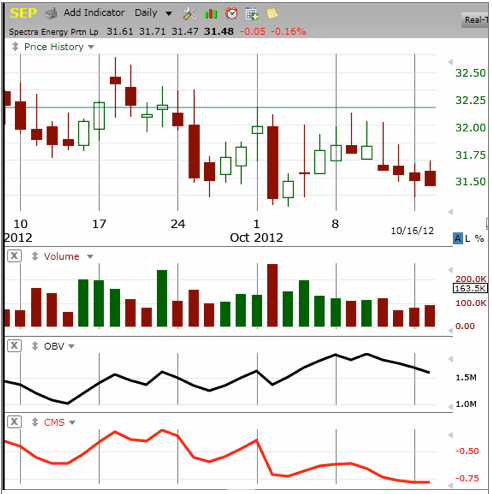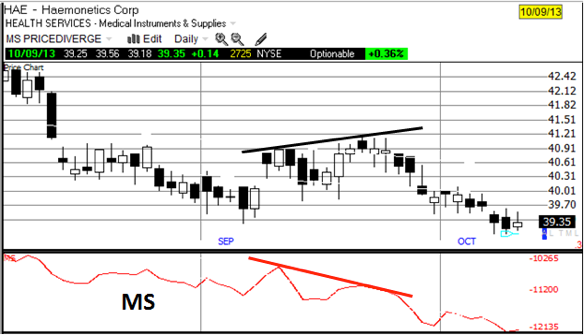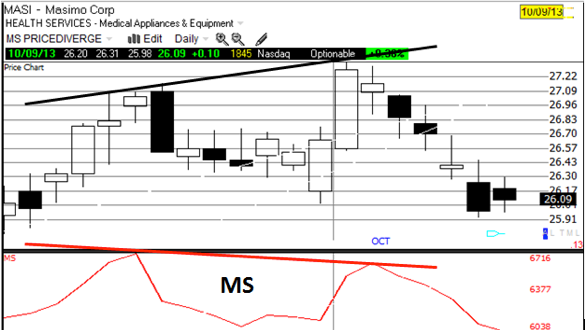Money Stream, an important indicator, is proprietary to the creator of TC2000. We are grateful for Don Worden!
Learn with our products : Investing book, and Course opportunities.
An Introduction
Money Stream, as with all indicators, must be content with just three variables to derive their magic: Price, Volume and Time. These three basic factors and their interactions provide a rich landscape from which all indicators derive. Today’s blog focuses on one way volume contributes to price action.
MoneyStream®
The Cumulative Money Stream (CMS), or just Money Stream (MS), was developed by award-winning technician Don Worden and is the exclusive intellectual property of Worden Brothers, Inc. This indicator has much the same objectives as the On Balance Volume (OBV). Generally, you look for divergences. So, before we tackle MS, lets review the OBV.
Over 50 years ago, Joe Granville published his work on a cumulative indicator that adds volume on up days and subtracts volume on down days, thus combining price and volume. The OBV was one of the first indicators to measure positive and negative volume flow. This allowed chartists (technical analysts) to look for divergences between Volume and Price to predict price movements or to confirm price trends. OBV line is simply a running total of positive and negative volume. A period’s volume is positive when the close is above the prior close. A period’s volume is negative when the close is below the prior close. For example, if today’s closing price is higher than yesterday’s close, then today’s volume is added to the indicator. If today’s close is less, then the current volume is subtracted from the OBV. Here is how the cumulative value of the OBV would look as the days progress:
Date Close Up-Down Volume Plus/Minus OBV
10/7/13 $37.02
10/8/13 $37.23 +1 76,400 +76,400 76,400
10/9/13 $37.28 +1 83,100 +83,100 159,500
10/10/13 $37.05 -1 79,700 -79,700 79,800
10/11/13 $36.19 -1 81,600 -81,600 -1,800
Notice, OBV can be either negative or positive. The value measures buying (+) and selling (-) volume pressures. Granville suggested that volume precedes price, or that rising volume should forecast a rising price. A rising OBV reflects positive volume pressure that can lead to higher prices. Conversely, falling OBV reflects negative volume pressure that can foreshadow lower prices. Granville noted that OBV would often move before price. Expect prices to move higher if OBV is rising while prices are either flat or moving down. Expect prices to move lower if OBV is falling while prices are either flat or moving up. The absolute value of OBV is not important. However, the slope (trend) of the line is critical.
What an analyst should look for is how the OBV trend compares to the price trend. By comparing these trends, divergences can forecast potential changes in the the price pattern. Bearish and bullish divergences are often used to forecast price trend changes. The OBV is powerful in its simplicity. Easy to calculate and easy to interpret. However, it is not a stand-alone indicator but finds wide use with other indicators or basic price patterns.
So how does the OBV compare to the Money Stream? The main difference is that the MS has a greater ability to contradict price movement than the OBV. This is achieved by using all of the elements within the daily price bar rather than just the close. The high, low, close and daily range are related to volume in a unique and proprietary way. Comparing Money Stream and OBV in a variety of stocks and time frames generally finds that MS has the greater predictive power. But not always. Sometimes OBV does the better job. The more things you look at, and the more time frames you regularly check out, the better you will do.
Money Stream was developed after years of experience with price-volume indicators. The final result embodies a method of filtering out what is believed to be a logical error in the OBV. MS is not as volatile and it has more power to contradict than OBV, working well together. They are based on entirely different concepts and sometimes disagree completely. It is best to wait for mutual confirmation. Together they are potent medicine. MS lends itself better to precise timing than OBV, because MS is affected considerably by the price trend itself. Note, both OBV and MoneyStream are not oscillators but “cumulative” indicators.
Let’s compare some MS and OBV patterns:

Fig. 1 OBV vs. MS slope comparison.

Fig. 2 OBV/MS comparison including Volume.
Both OBV and Money Stream are viable indicators to help analyze where price might go. The following charts demonstrate how MS can be used in potential forecasts.

Fig. 3 MS slope can help forecast price trend.

Fig. 4 MS slope forecasting subsequent price pattern.
Money Stream (MS) is a valuable tool for the technical analyst when properly used in concert with OBV and other indicators. Successful technical traders will make MS a standard, using all the relationships shown on the Master Overbought/Oversold Indicator Summary in chapter 5 of “Provident Investing.”
“Money is like an arm or a leg: Use it or lose it.” Henry Ford
Here (Provident Investing index)
What is the Traders Edge?
Insight!
MoneyStream is a registered trademark of Worden Brothers, Inc.
[contact-form][contact-field label=’Name’ type=’name’ required=’1’/][contact-field label=’Email’ type=’email’ required=’1’/][contact-field label=’Website’ type=’url’/][contact-field label=’Message’ type=’textarea’/][/contact-form]

